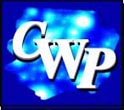Some Important Contributions
Discovered the process of nuclear disintegration called
nuclear fission, with O. Hahn and F. Strassmann.
Named the process fission and gave its physical explanation, with O. R. Frisch.
Discovered element 91, protactinium, with O. Hahn.
Confirmed, with W. Orthmann, Chadwick and Ellis' observations of the
continuous energy spectrum in nuclear beta decay which led Wolfgang Pauli
to propose the existence of the neutrino.
Recent developments.
Measured absorption of short wave length gamma rays and found agreement with the Klein-Nishina formula, witn H. H. Hupfield.
Described the process now known as internal conversion (decay electron directly ejecting a K electron) and discovered the radiationles
transition now known as the Auger effect in 1923;
see
below where the paper describing this discovery is referenced. Auger independently discovered the
effect in 1925.
Some Important Publications
O. Hahn and F. Strassmann,
"Uber den Nachweis und das Verhalten der bei der Bestrahlung des Urans mittel
Neutronen enstehenden Erdalkalimetalle," Die Naturwissenschaften 27:11
(1939). Meitner does not appear as an author of this paper because, being a
Jewish woman, she fled Berlin July 13, 1938 to escape Nazi persecution.
"Disintegration of Uranium by Neutrons: A New Type of Nuclear Reaction,"
Nature 143: 239 (1939) with O. R. Frisch.
"Products of the Fission of the Uranium Nucleus," Nature 143: 471 (1939)
with O. R. Frisch and
"New Products of the Fission of the Thorium Nucleus," Nature 143: 637
(1939) with O. R. Frisch.
"Die Muttersubstanz des Actiniums, ein neues radioaktives Element von langer Lebensdauer," Physikalische Zeitschrift 19: 208 (1918) with O. Hahn.
"Uber eine absolute Bestimmung der Energie der primaren beta -Strahlen von Radium E," Z. Phys. 60:143 (1930) with W. Orthmann.
"Uber das Absorptiongesetz fur kurzwellige gamma-Strahlung," Z. Phys. 67: 147 (1930) with H. H. Hupfield.
"Das beta-Strahlenspektrum von UX1 und seine Deutung," Z. Phys. 17: 54-66 (1923).
Some Honors
Element 109 named "Meitnerium" in 1992.
Foreign member, Swedish Academy of Science; elected
1945.
"Woman of the Year," Women's National Press Club, Washington, D.C.
1946.
Foreign Member, The Royal Society of London.
Leibniz Medal, Berlin Academy of Sciences,
1924.
Lieben Prize, Vienna Academy of Sciences, 1925.
Ellen Richards Prize, Association to Aid Women Scientists, 1928.
Prize for Science and Art, City of Vienna, 1947.
Max Planck Medal, German Physics Society, 1949.
Member of the Ordre pour le Merite, Civilian Class (W. Germany), 1957.
Schlozer Medal, University of Göttingen 1962.
Enrico Fermi Prize, Atomic Energy Commission (U.S.)
with Hahn and Strassmann 1966.
Member of the Academies of Berlin, Copenhagen, Gothenburg, Goettingen, Halle, Oslo, Stockholm, and Vienna. [bmfrs1970of]
Honorary doctorates from Adelphi College, University of Rochester, Rutgers University, Smith College, and the University of Stockholm.
[bmfrs1970of]
Otto Hahn Prize, 1954. [bmfrs1970of]
Jobs/Positions
1907-12 unpaid researcher, Chemical Institute, Berlin
1912-15 Assisent to Max Planck (first paid position), University of Berlin
1912-13 unpaid "guest", Kaiser-Wilhelm Institute fur Chemie (KWI), Berlin-Dahlem
1913-18 Mitglied, KWI, Berlin-Dahlem
1918-38 Head, Radiophysics Department, KWI, Berlin-Dahlem
1921 Visiting Professor, University of Lund, Sweden
1922 Dozentur, University of Berlin
1926 Nichtbeamteter Ausserordentlicher Professor, University of Berlin
1938-47 Nobel Institute for Experimental Physics, Sweden (Meitner was paid a "very modest stipend" from the Royal Swedish Academy of Sciences, but was not given an official title.) [96 RLS].
1946 Visiting Professor, Catholic University of America, Washington D.C.
1947-60 Research Professor, Royal Institute of Technology (KTH), Sweden
Education
Ph.D. University of Vienna 1905
[1 CLH], [1Y N20], [7 MWR1], [11 EY1], [12A GKS], [17 MWR2], [26 SBM], [27 LDO], [37B TO], [96 RLS], [dosb1980of], [bmfrs1970of], [pt1960lm]
 Additional Information/Comments Additional Information/Comments
Meitner was the first woman physics professor in Germany.
Early in Meitner's career, an editor of the German encyclopedia Brockhaus asked her to submit an article on radioactivity. Meitner had already published several articles by that time, but went only by her last name. In her response to Brochhaus, however, Meitner included her first name as well. The editor replied, in Meitner's own words, that "he would not think of printing an article written by a woman" [pt1960lm].
From 1914 to 1916, Meitner volunteered as an x-ray nurse-technician in the Austrian army. She and Hahn often coordinated their leaves so that they could return to their lab and continue the search for protactinium.
Meitner may have been ahead of her time in the careful handling of radioactive substances. Ruth Sime described her rigid laboratory protocol as follows: "Chemical experiments and physical measurements were confined to separate rooms; people handling radioactive substances were required to follow uniform procedures... a roll of toilet paper hung next to the telephones and every door handle--and [people could] sit only on specially marked yellow chairs. No one ever shook hands in greeting, a suspension of the usual rules of German etiquette... Meitner was known for being especially strict and for insisting that strong activities be kept out of her physics section... Her precautions were effective: twenty-five years later her section could still be used for studying very weak activities" [96 RLS].
RECOMMENDED READING
For an in depth study of Lise Meitner's life and work, see the excellent biography of
Ruth Lewin Sime, Lise Meitner: A Life in Physics, University of California Press, Los Angeles 1996.
[96 RLS]
An interesting biography for the non-specialist is Patricia Rife, Lise Meitner and the Dawn of the Nuclear Age
, Birkhäuser, Boston - Basel - Berlin 1999. A review of this book
by Gary Goldstein may be found here.
Field Editor: Nina Byers
<byers@physics.ucla.edu>
|  Welcome
to CWP at UCLA
Welcome
to CWP at UCLA  Welcome
to CWP at UCLA
Welcome
to CWP at UCLA